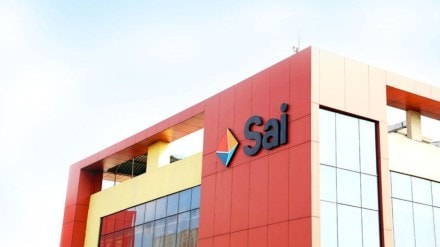Sai Life Sciences, one of the leading pharmaceuticals and biotechnological player is set to debut on the capital markets with its initial public offering (IPO) on December 11. The price band for the issue is between Rs 522 – 549 per share. The IPO is scheduled to close on December 13. Sai Life Sciences IPO consists of a fresh issue of Rs 950 crore and an offer for sale of Rs 2,092.62 crore. This together brings the total size of the issue to Rs 3,042.62 crore.
Furthermore, after the 3-day bidding of the public issue, the IPO is expected to list on Indian stock exchanges on December 18.
GMP Status
As per the recent trends, the Sai Life Sciences IPO’s grey market premium (GMP) as of 11:22 AM IST stands at Rs 25 per share on December 10, highlighting that the shares are trading at almost 4.55 per cent premium.
Sai Life Sciences IPO: Key Risks
Ahead of the Sai Life Sciences IPO launch, let’s take a look at the key risk factors that could influence the company’s performance and future trajectory:
1. A significant portion of Sai Life Sciences’ revenue depends on securing business from biotechnology and pharmaceutical customers. In the Red Herring Documents filed with ROC, the company in its risk disclosure noted, “Our financial performance depends on our ability to secure business from biotechnology and pharmaceutical customers
and consequently we may be subject to risks, uncertainties and trends that affect our customers in these industries.”
2. Sai Life Sciences’ business could also be affected if its clients fail to develop or manufacture commercially viable drugs. The company in its RHP filing states, “Our business may be adversely affected if our customers fail to develop or manufacture commercially viable drugs, including due to industry specific challenges they may face.”
3. The company’s ability to retain customers depends heavily on maintaining high standards in audits and inspections. The company highlights, “We may not be able to continue to serve our customers if we fail to meet their standards in audits and inspections and this could significantly harm our reputation and result in the termination of ongoing projects by our customers.”
4. Research and development (R&D) is a key driver of growth for the pharmaceutical company. However, the company highlighted the risk of not achieving desired outcomes in its R&D efforts. If the company’s R&D initiatives do not yield the expected results, clients may opt to discontinue their partnerships. This poses a major risk to the company’s long-term growth prospects, especially as it seeks to expand its capabilities and market offerings.
“We depend on our research and development activities generally for our future growth and our inability to achieve thedesired outcomes in our research and development activities may result in customers opting to discontinue their partnerships with us,” the company added.
5. Government regulations play a crucial and significant role in any company’s ability to carry out its business efficiently, and any regulatory setbacks or changes in the law could disrupt operations and cash flows.
“We are subject to extensive government regulation, and if we fail to obtain, maintain or renew our statutory and regulatory licenses, permits and approvals required to operate our business, results of operations and cash flows may be adversely affected,” added the company in its RHP filing.
